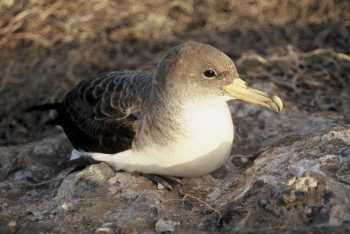Steffen Oppel (Royal Society for the Protection of Birds, Sandy, U.K.) and colleagues have published open-access in the journal Nature Conservation on estimating population size of the Cory’s Shearwater Calonectris borealis.
The paper’s abstract follows:
Population size assessments for nocturnal burrow-nesting seabirds are logistically challenging because these species are active in colonies only during darkness and often nest on remote islands where manual inspections of breeding burrows are not feasible. Many seabird species are highly vocal, and recent technological innovations now make it possible to record and quantify vocal activity in seabird colonies. Here we test the hypothesis that remotely recorded vocal activity in Cory’s shearwater (Calonectris borealis) breeding colonies in the North Atlantic increases with nest density, and combined this relationship with cliff habitat mapping to estimate the population size of Cory’s shearwaters on the island of Corvo (Azores). We deployed acoustic recording devices in 9 Cory’s shearwater colonies of known size to establish a relationship between vocal activity and local nest density (slope = 1.07,R2 = 0.86,p < 0.001). We used this relationship to predict the nest density in various cliff habitat types and produced a habitat map of breeding cliffs to extrapolate nest density around the island of Corvo. The mean predicted nest density on Corvo ranged from 6.6 (2.1–16.2) to 27.8 (19.5–36.4) nests/ha. Extrapolation of habitat-specific nest densities across the cliff area of Corvo resulted in an estimate of 6326 Cory’s shearwater nests (95% confidence interval: 3735–10,524). This population size estimate is similar to previous assessments, but is too imprecise to detect moderate changes in population size over time. While estimating absolute population size from acoustic recordings may not be sufficiently precise, the strong positive relationship that we found between local nest density and recorded calling rate indicates that passive acoustic monitoring may be useful to document relative changes in seabird populations over time.

Cory's Shearwater, photograph by Paulo Catry
Reference:
Oppel, S., Hervías, S., Oliveira, N., Pipa, T., Silva, C., Geraldes, P., Goh, M., Immler, E. & McKown, M. 2014. Estimating population size of a nocturnal burrow-nesting seabird using acoustic monitoring and habitat mapping. Nature Conservation 7: 1-13.
John Cooper, ACAP Information Officer, 07 May 2014

 English
English  Français
Français  Español
Español